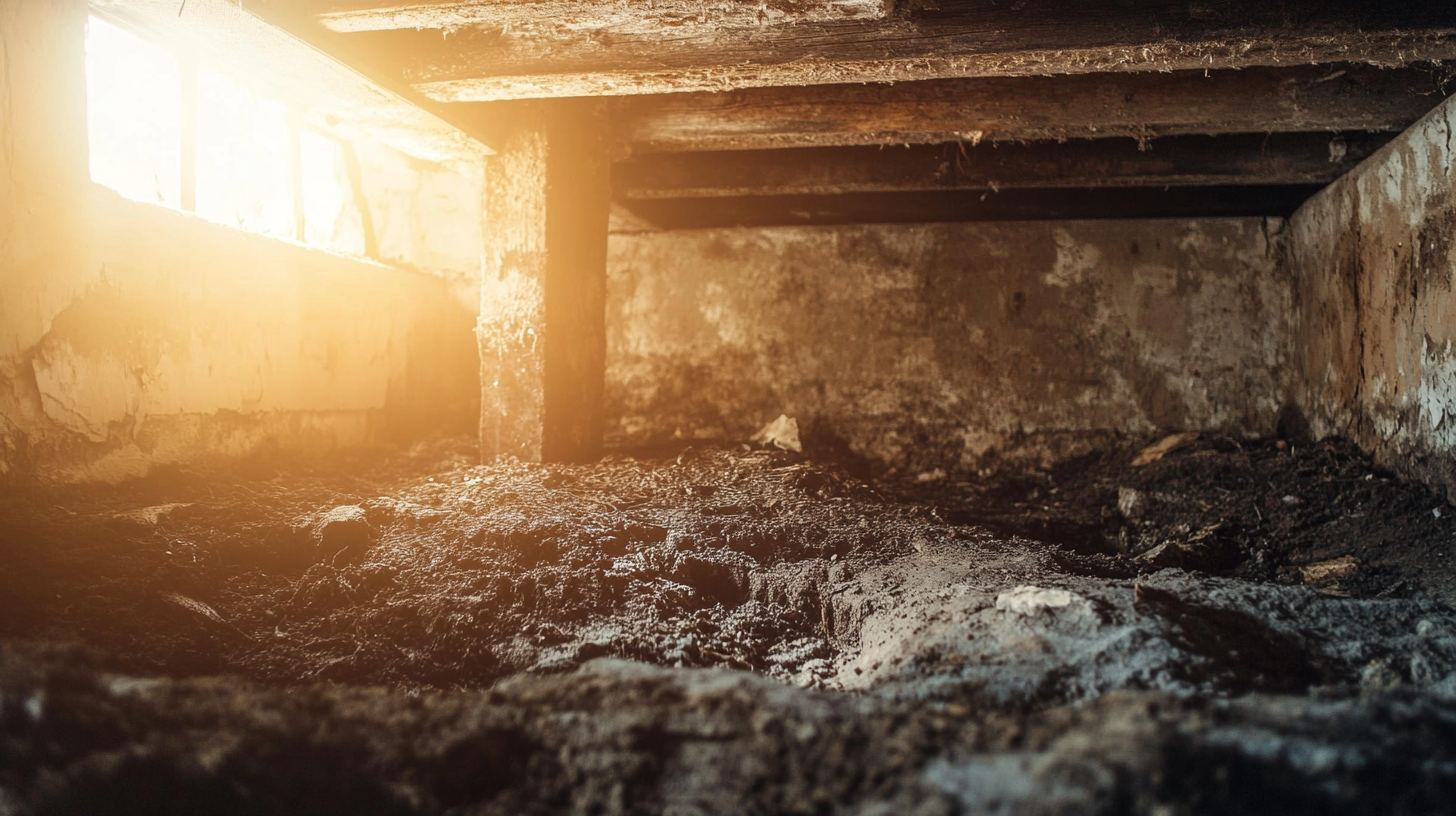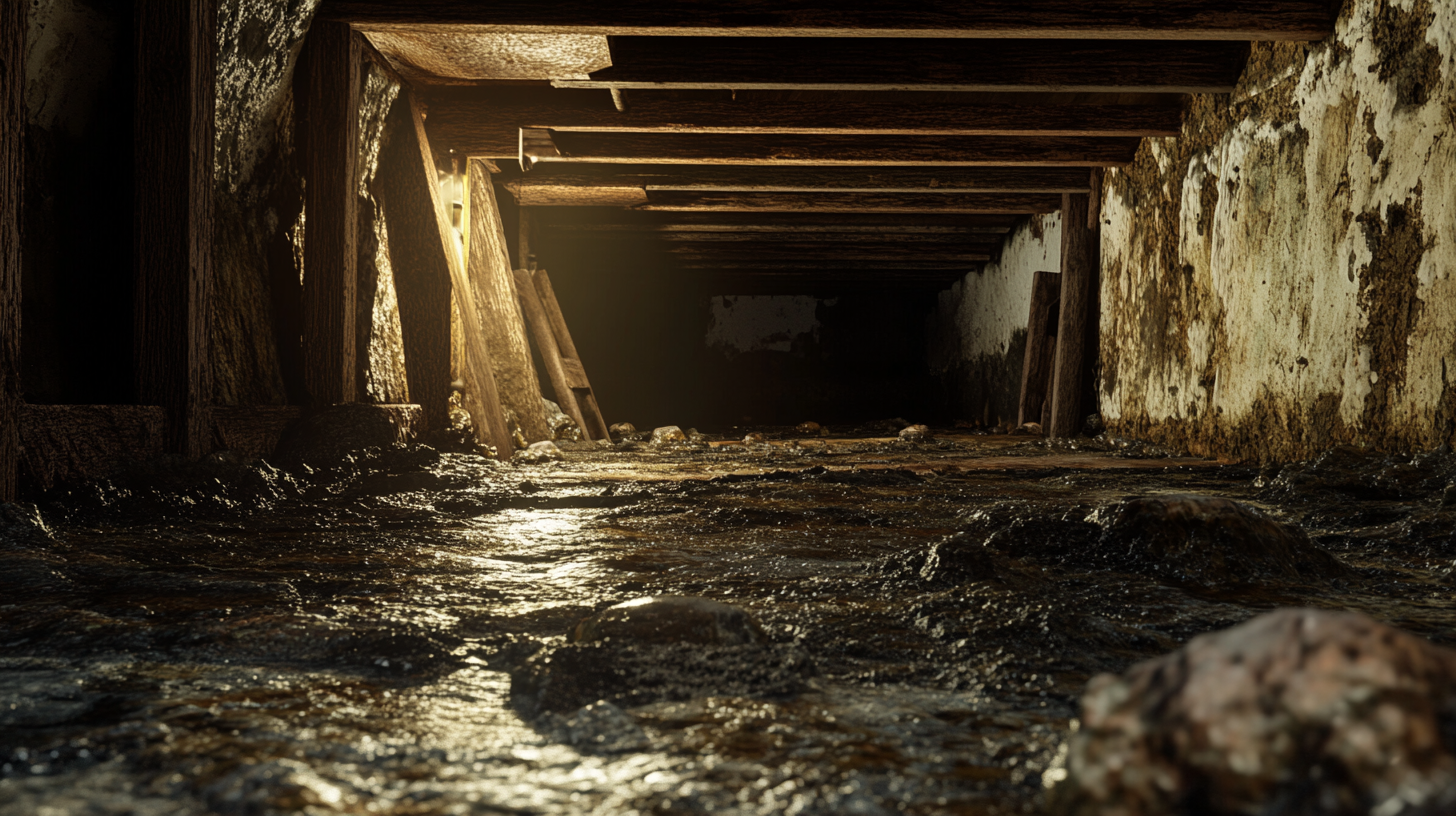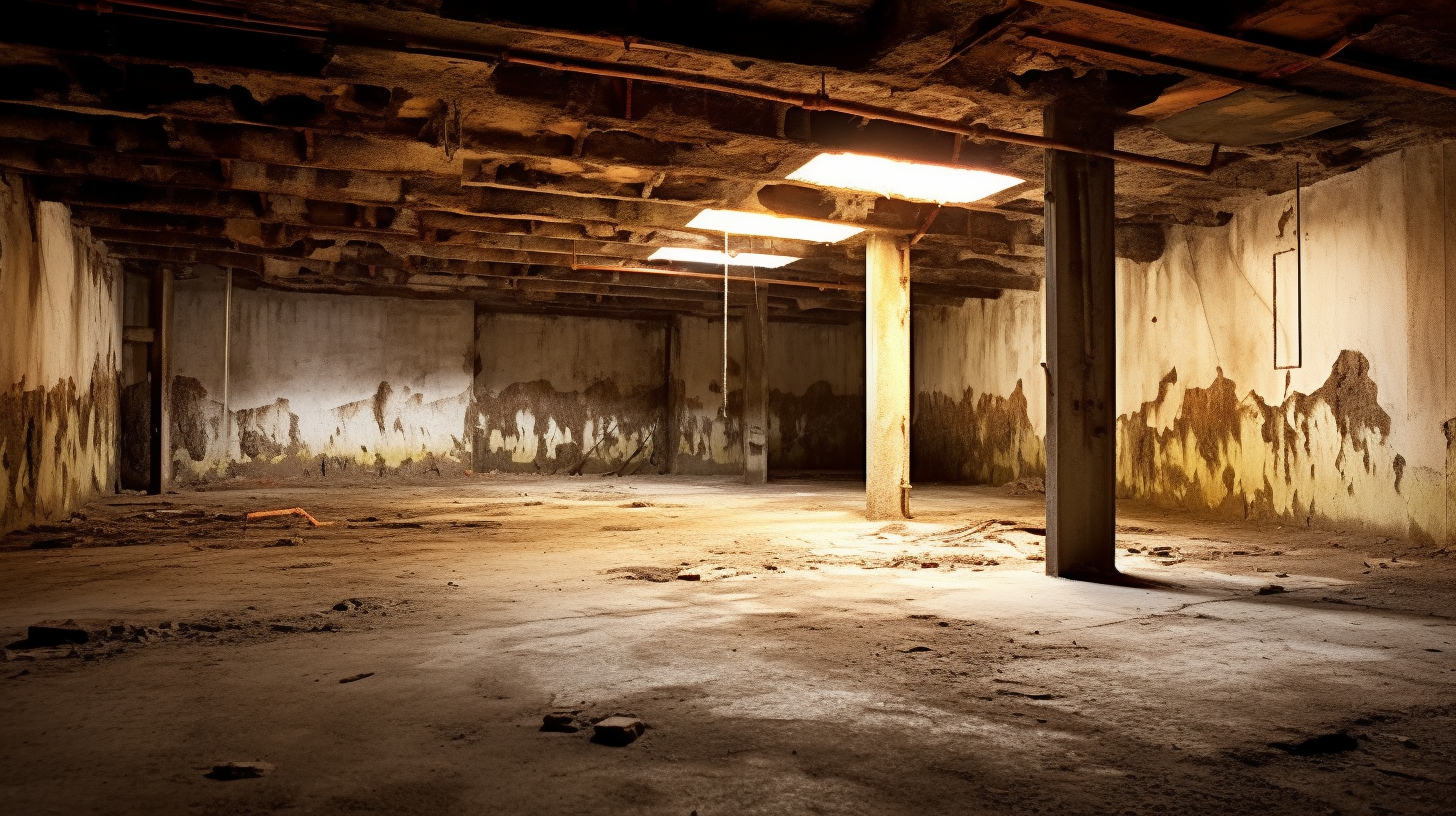Now IS THe Time To...

Crawl Space Services In Knoxville, TN
Stetson Howard: 865-432-6743
CRAWL SPACE ENCAPSULATION, REPAIR, WATERPROOFING & MOLD REMOVAL
No-Obligation, Free Inspections
No-Obligation Free Estimates
We Warranty All of Our Work
100% Satisfaction Guaranteed
For homeowners, recognizing the severity of foundation cracks is vital for maintaining the stability, safety, and value of their homes. Cracks, often dismissed as superficial, can be the first signs of deeper structural issues. Ignoring these warning signals may lead to more extensive damage over time, risking not just expensive repairs but also the overall safety of the structure. By understanding the types of cracks and their causes, homeowners can take swift and appropriate action before minor problems escalate into significant threats to their property. This blog aims to guide you through identifying the severity of foundation cracks, distinguishing between cosmetic and serious concerns, and outlining the steps required to protect your investment. Equipped with this knowledge, homeowners can confidently navigate repair decisions and ensure a solid foundation for the future.
Types of Foundation Cracks
Cracks in the foundation can range from minor hairline fractures to significant structural threats. Understanding the differences is crucial for making informed decisions about necessary repairs and maintaining the stability of your home. This section will help you identify common types of foundation cracks and distinguish between non-threatening and serious structural issues.
Identifying Different Crack Types
Hairline Cracks: These are the thinnest cracks, often no wider than the width of a sewing needle. They usually appear due to the natural curing process of concrete or slight settling. Hairline cracks are typically vertical or diagonal and don't pose immediate structural risks unless they continue to expand.
Shrinkage Cracks: These cracks develop as concrete cures and loses moisture, leading to slight shrinkage. They are generally thin, often appear in random patterns, and don't indicate significant structural problems unless water starts seeping through them.
Structural Cracks: Structural cracks can be a major concern as they suggest issues with the foundation’s stability. They are often wider than 1/4 inch and appear horizontally or in a stairstep pattern across brick or block walls. Structural cracks indicate shifting or settling that requires professional assessment.
Settlement Cracks: Caused by uneven settling of the foundation, these cracks are usually diagonal and appear at the corners of walls or around doors and windows. Settlement cracks may not pose immediate danger if they remain stable, but rapid widening or new cracks require prompt evaluation.
Characteristics of Non-Threatening vs. Serious Cracks
Non-Threatening Cracks:
- Hairline cracks that do not widen over time.
- Shrinkage cracks with no associated water leakage.
- Minor settlement cracks that are thin and stable.
Signs of Serious Structural Concerns:
- Cracks wider than 1/4 inch, especially horizontal or stairstep patterns.
- Cracks that appear suddenly and widen over time.
- Water leakage through cracks, indicating poor drainage or hydrostatic pressure.
- Accompanying signs such as sticking doors, uneven floors, or gaps between walls and floors.
By identifying the characteristics of different crack types and recognizing the warning signs of serious structural issues, homeowners can better understand when professional intervention is necessary to protect their home’s foundation.
Factors Influencing Crack Severity
Evaluating the severity of foundation cracks is crucial in determining the appropriate level of intervention required to protect your home. Certain factors, such as the width, length, location, and pattern of cracks, can provide important clues about underlying structural problems. Understanding these elements can help homeowners identify potentially serious issues and take timely corrective action.
Width and Length of Cracks
Guidelines for measuring crack dimensions and what measurements indicate higher risk:
- Cracks less than 1/16 inch wide are generally considered minor and non-structural, often arising from natural settling or curing processes.
- Cracks between 1/16 and 1/4 inch may require monitoring, especially if they continue to expand over time.
- Cracks wider than 1/4 inch or those that extend several feet horizontally or diagonally can indicate significant structural instability and necessitate immediate professional evaluation.
Importance of tracking changes in crack size over time:
- Keep a log of crack measurements and use a pencil or tape to mark where the crack ends.
- Measure the width and length at regular intervals, noting any changes or new cracks appearing.
- Any rapid expansion or the sudden emergence of multiple new cracks can signal shifting or settling of the foundation, requiring immediate attention.
Location and Pattern of Cracks
How the location and pattern of cracks can influence their potential impact on structural integrity:
- Cracks near doors, windows, or at the corners of walls can indicate settlement problems as these areas are more susceptible to structural movement.
- Vertical cracks are often less concerning than horizontal cracks, which suggest inward pressure against the foundation.
Specific patterns that often signal significant underlying issues:
- Horizontal Cracks: Found along the walls of the foundation, these often indicate soil pressure against the structure, particularly in regions with expansive soil or improper drainage. Immediate professional attention is needed as these cracks can precede wall bowing or buckling.
- Stair-Step Cracking in Block Foundations: Cracks that form a stair-step pattern across block or brick walls are usually a sign of differential settlement, which occurs when part of the foundation sinks faster than another. Such patterns may require underpinning or reinforcement to stabilize the foundation.
Assessing the Immediate Risks
Determining the potential risks associated with foundation cracks is crucial for protecting the structural integrity of your home. By understanding the differences between active and dormant cracks, as well as recognizing associated structural symptoms, homeowners can gauge the urgency of repairs and identify when professional help is needed.
Signs of Active vs. Dormant Cracks
Methods to determine if a crack is active and still moving: Active cracks are those that continue to widen or extend, often signifying ongoing foundation movement. Dormant cracks are stable and do not show signs of further development.
- Crack Gauges: These are small devices that can be fixed across a crack to detect any relative movement between the two sides. If the gauge shows a shift over time, the crack is active and may need immediate attention.
- Marking and Monitoring Changes: Draw lines or place small markers across cracks and measure the width at regular intervals to monitor changes. If the crack is lengthening or widening, this indicates ongoing structural movement that should be assessed.
Associated Symptoms Indicating Severity
Other structural symptoms to watch for in conjunction with cracks:
- Doors That Won't Close: If interior doors or windows are suddenly sticking, misaligned, or hard to close, it could be due to shifts in the foundation that have affected the frame.
- Uneven Floors: Sloping or uneven floors are a strong indicator of foundation settling or movement. When combined with cracks, this symptom requires urgent attention to prevent further damage.
- Gaps Around Window Frames: Gaps between window or door frames and walls can indicate that the foundation is settling unevenly, causing the structure to warp. This often leads to stair-step or diagonal cracks nearby.
Tools and Techniques for Evaluating Cracks
Evaluating foundation cracks promptly and accurately is essential for determining the severity of the problem and taking the right course of action. Knowing what tools to use and when to call a professional can help homeowners safeguard their property effectively. This blog section explores the tools and techniques that will empower you to make informed decisions.
DIY Assessment Tools
Tools homeowners can use to assess cracks themselves: Homeowners can begin the evaluation process by using simple tools to measure and monitor cracks.
- Rulers or Calipers: Use a ruler or caliper to measure the width and length of the crack precisely. Note these measurements and monitor them periodically to detect any expansion.
- Plumb Lines: A plumb line helps determine whether walls are vertical or have started to lean, potentially indicating structural shifts.
- Levels: A level is essential for checking whether floors are even or have started to slope due to foundation movement.
How to properly use these tools to gather accurate information:
- Place rulers or calipers horizontally across the widest part of the crack to measure its current width, recording the dimensions for future reference.
- Use a plumb line from ceiling to floor to detect deviations in the verticality of walls, noting any significant tilts.
- Position a level on floors or surfaces near the crack to check for slopes, which could indicate settling.
When to Hire a Professional
Criteria for deciding when to bring in a structural engineer or foundation specialist: Not all cracks require immediate professional intervention, but consider hiring a structural engineer or foundation specialist if:
- Cracks are wider than 1/4 inch or continue to expand in size,
- You notice horizontal or stair-step cracks, especially in block or brick walls,
- Other signs of structural distress accompany cracks, such as sticking doors, gaps around window frames, or uneven floors.
What to expect during a professional assessment:
- Inspection and Measurement: The professional will perform a thorough inspection, using specialized equipment to measure and assess the cracks' size, pattern, and location.
- Soil Analysis and Structural Evaluation: They may analyze soil composition around the foundation and check the structural framework for shifts.
- Reporting and Recommendations: The expert will provide a detailed report on the findings, including the underlying causes, severity of the problem, and recommended repair solutions.
Interpreting Assessment Results
Accurately interpreting assessment results is key to making informed decisions about foundation repairs. By understanding professional reports and aligning repairs with the severity of the issues, homeowners can choose the right strategy to maintain the structural health and value of their property.
Understanding Professional Reports
How to read and understand reports from structural engineers: Structural engineers provide detailed reports on foundation conditions that can initially appear technical and overwhelming. However, these reports contain crucial information that can guide your repair decisions.
- Findings: This section summarizes the current state of your foundation, detailing the types, locations, and measurements of cracks, as well as associated issues like soil movement, water leakage, and structural shifts.
- Analysis and Diagnosis: Here, the engineer identifies the probable causes of the cracks, such as soil conditions, drainage problems, or structural instability, and assesses the overall impact on the foundation's stability.
- Recommendations: Depending on the severity of the issues, the recommendations will outline possible repair strategies, from simple crack sealing to more extensive measures like underpinning or pier installation.
Examples of typical recommendations for minor vs. major repair strategies:
- Minor Repairs: For minor cracks due to natural settling or shrinkage, the engineer may recommend crack sealing with epoxy injections or concrete patches.
- Major Repairs: For significant structural damage, the report might suggest comprehensive solutions such as underpinning to stabilize the foundation, or installing piers to redistribute the load.
Decision-Making Based on Severity
How to use the information from your assessments to make informed decisions about necessary repairs:
- Cost: Consider the estimated cost of each recommended solution. While comprehensive repairs can be expensive, investing in structural stability now can prevent higher repair costs in the future.
- Urgency: Evaluate the urgency of each issue. Active cracks, significant structural shifts, or severe water leakage require immediate intervention to prevent further damage.
- Long-Term Impact on Property Value: Weigh the long-term benefits of repairs. Fixing foundational issues now not only ensures safety but also helps maintain or even enhance the property value, making the investment worthwhile.
By understanding the engineer's findings and aligning repairs with the severity of your foundation issues, you can ensure the longevity and stability of your home while optimizing the investment in your property's value.
FAQs
Recent Blog Posts
Crawl Space News







